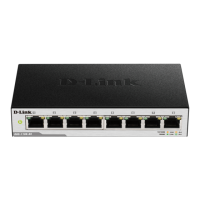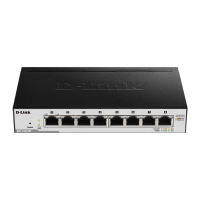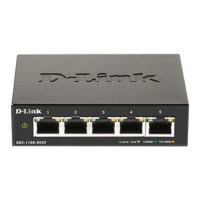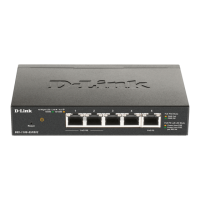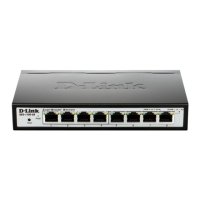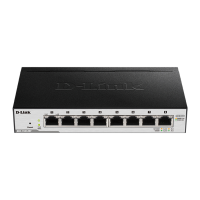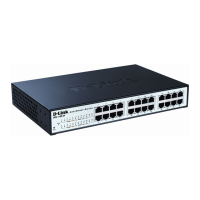5 Configuration D-Link DGS-1100-06/ME User Manual
22
Click Apply for the settings to take effect.
Interface Name: Specifies the interface name of the IPv6 neighbor. To search for all the current interfaces
on the Switch, go to the second Interface Name field in the middle part of the window, tick the All check box.
Tick the Hardware option to display all the neighbor cache entries which were written into the hardware table.
State: Use the drop-down menu to select All, Address, Static or Dynamic. When the user selects address
from the drop-down menu, the user will be able to enter an IP address in the space provided next to the state
option.
Click Find to locate a specific entry based on the information entered.
Click Clear to clear all the information entered in the fields.
System > DHCP Auto Configuration
This page allows you to enable the DHCP Auto Configuration feature on the Switch. When enabled, the
Switch becomes a DHCP client and gets the configuration file from a TFTP server automatically on next boot
up. To accomplish this, the DHCP server must deliver the TFTP server IP address and configuration file
name information in the DHCP reply packet. The TFTP server must be up and running and store the
necessary configuration file in its base directory when the request is received from the Switch.
Figure 5.17 – System > DHCP Auto Configuration
System > Trap Settings
The Trap Settings page allows user the set the difference status of SNMP notifications trapped to the
Smartconsole. By default, Trap Setting is disabled.
Figure 5.18 – System > Trap Settings
You can select which event message(s) to be sent to the managing station.
Destination IP: Specifies the destination IP.
System Event: Specifies the device to send bootup notifications.
Fiber Port Event: Events when fiber port connection port link up / link down.
Twisted Pair Port Event: Events when pair port connection port link up / link down.
Port Security Violation: Events of port security violation.
Loopback occurring/recovery: Specifies the device to send notifications when loopback occurring /
recovery.
System > Port Configuration > Port Settings
In the Port Setting page, the status of all ports can be monitored and adjusted for optimum configuration. By
selecting a range of ports (From Port and To Port), the Speed can be set for all selected ports by clicking
Apply. Press the Refresh button to view the latest information.
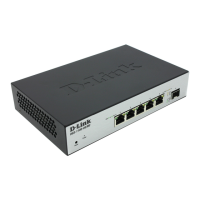
